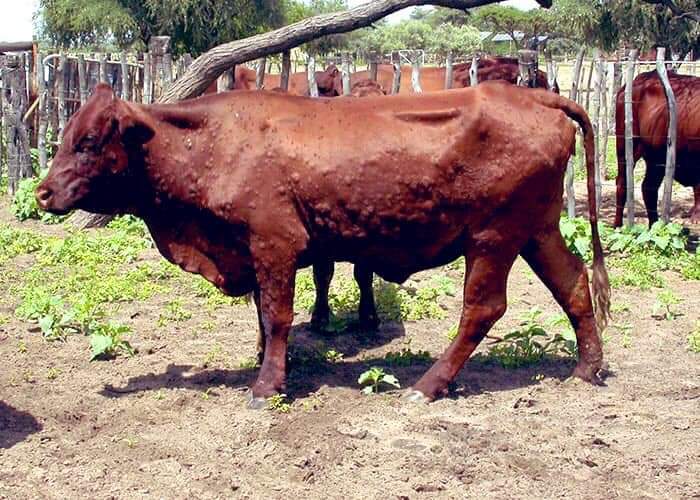OMUTHIYA – An outbreak of lumpy skin disease has resulted in 196 reported cases and 43 cattle deaths in the Oshikoto region since November last year.
Chief Animal Health Technician at the State veterinary office in Oshikoto Lumeta Lomboleni told Nampa on Thursday that the disease was first detected on 8 November 2024 in the Nehale Lyampingana constituency’s Mangetti area.
It has since spread throughout the region, with the highest concentrations of cases reported in the Omuntele, Omuthiya, Oniipa, Onayena and Eengodi constituencies.
“Twenty-two deaths were reported in the Nehale Lyampingana Constituency, where the disease started. The other 21 deaths were recorded throughout the region,” he said.
Lomboleni advised farmers to vaccinate their cattle against the disease.
“We urge farmers who can afford the vaccine to vaccinate their animal against this disease or visit local sites during our vaccination period that is ongoing in the region so their animals can be vaccinated,” Lomboleni said.
He highlighted the importance of waiting 21 days after vaccination before moving cattle to allow for the development of sufficient immunity and prevent disease transmission.
“Farmers relocating vaccinated cattle are requested to present vaccination receipts and bottles alongside travel permits if they have vaccinated their animals themselves,” he said.
Lomboleni called on farmers to continue reporting suspected cases to their nearest veterinary office and bring their animals to designated vaccination sites.
“We are currently busy with the vaccinations and requesting farmers to bring their animals to the nearest cattle crush and other places as announced,” he said.
He warned against consuming meat from animals that have died from lumpy skin disease, citing potential toxicity.
-Nampa


